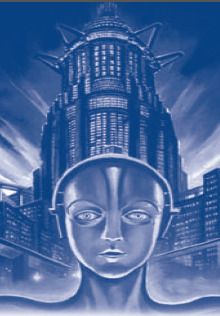 Technology is caught between a promise to free people from boredom and drudgery and a nagging worry that it will only worsen the condition that it set out to escape. The history of utopian thought flips from wild optimism to depressive pessimism about the prospects of technology.
Technology is caught between a promise to free people from boredom and drudgery and a nagging worry that it will only worsen the condition that it set out to escape. The history of utopian thought flips from wild optimism to depressive pessimism about the prospects of technology.
For some, technology represents a chance to re-design more perfect and orderly urban worlds. Typically, the entire modernist tradition in planning and architecture stands accused of peddling technocratic illusions, usually by conservatives trying to preserve an equally impossible harmonious semi-rural past.
On the other hand, there are all those dystopias of an autonomous technology out of control, most famously Aldous Huxley’s Brave New World (1932), or falling under the control of some manipulative but deranged social engineer, the Big Brother of George Orwell’s 1984 (1948).
The power of technology
This sense of human resignation under a technotopia formed the backdrop to Kurt Vonnegut’s first novel Player Piano (1952). Vonnegut is best known for his science fiction novel Slaughterhouse 5, a semiautobiographical account of the fire-bombing of Dresden in February 1945. Set in the near future, Player Piano compares society to an automated musical instrument, pre-programmed to respond to the unseen instructions of machines and computers.
Computer technology allows society to be divided between a meritocratic elite of engineers, scientists and planners, and a surplus majority. All work is performed by machines overseen by technocratic managers and engineers. The masses are placated with material goodsbut lack any social purpose or function beyond menial forms of labour. On one side of the city of Illium, New York, are the gated communities of the elites, in the middle stands the huge Illium industrial complex, while on the other side of the river in Homestead the socially redundant are stored.
The revolution will not be streamed to iphone
While the novel is stamped by Vonnegut’s signature mark of resigned fatalism, dissent against machine-induced human degradation stirs among some elite characters. An underground movement known as the Ghost Shirt Society, named after the native US Indian resistance movement, organise a successful rebellion against the useless efficiency of automated progress. Machines are smashed systematically, forcing ‘the brains’ of the Ghost Shirts to embrace the ruins of a machine-less utopia. Much to the dismay of their rebel leaders, with technology lying in ruins ordinary people begin to once again take delight in the practical effort to repair broken vending machines. The fascination with technology is re-ignited. This unexpected return to technology at a more human level, I think, can be read as part of the ambiguity of the novel rather than, as some see it, in terms of Vonnegut’s despair over the narcotic effect of technology.
